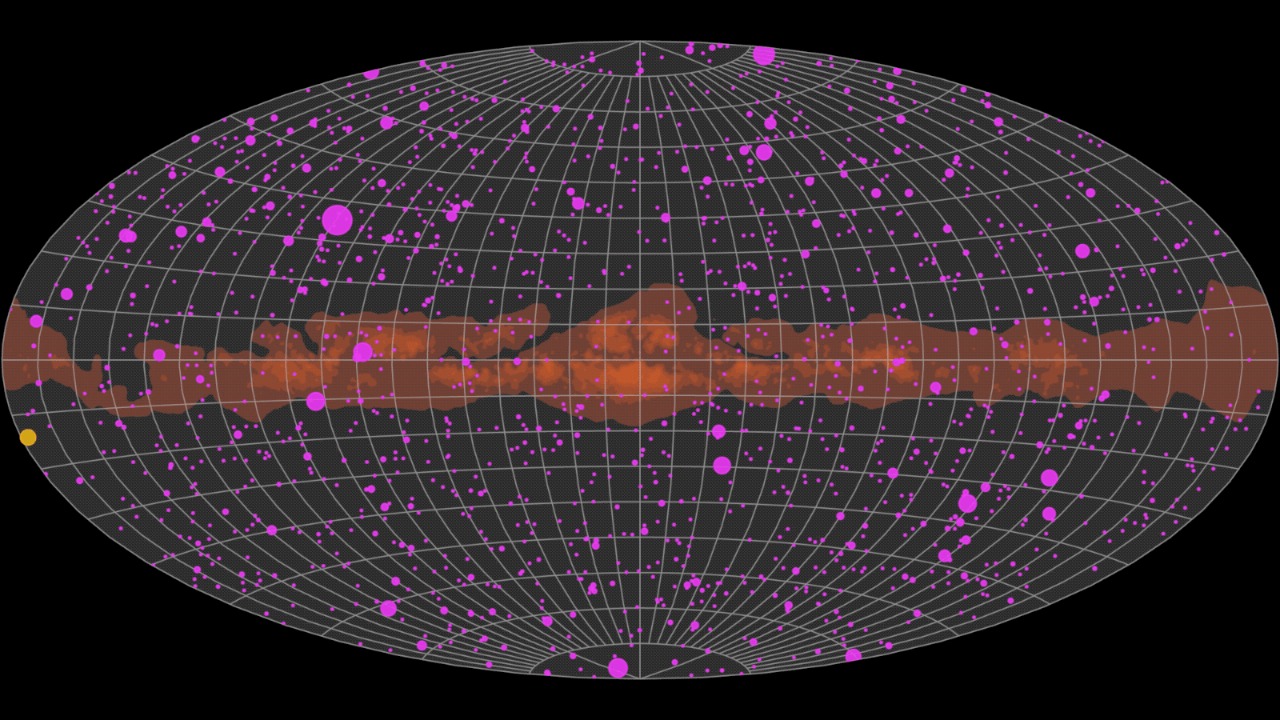
Scientists at top-tier research institutions have made a significant breakthrough by recreating miniature versions of cosmic “fireballs” in laboratory conditions. These intense bursts of plasma, originating from gamma-ray bursts, have been simulated to investigate the perplexing disappearance of certain high-energy gamma rays during these events. This innovative approach allows researchers to mimic extreme astrophysical phenomena on Earth, potentially resolving discrepancies observed by space telescopes like Fermi and Swift. The ultimate goal is to explain the unexpected shortfall in gamma-ray emissions that has baffled astronomers for years.
Cosmic Fireballs: Origins in the Universe
Cosmic fireballs are naturally formed as relativistic jets of plasma, ejected from collapsing stars or merging neutron stars. These phenomena have been observed by telescopes such as the Fermi Gamma-ray Space Telescope. These fireballs exhibit key characteristics, including temperatures exceeding billions of degrees and speeds nearing the velocity of light, based on data from historical gamma-ray burst detections.
Real-world examples of these fireballs are associated with short-duration gamma-ray bursts, which last from milliseconds to seconds. These bursts are among the most energetic events in the universe, releasing more energy in a few seconds than our Sun will emit over its entire 10-billion-year lifetime.
The Puzzle of Missing Gamma Rays
One of the mysteries surrounding cosmic fireballs is the observed deficit in gamma rays. Models predict higher fluxes than what is detected, a discrepancy noted in analyses from the Swift satellite. This shortfall is most pronounced in energy ranges from 100 MeV to GeV.
Several factors could contribute to this deficit, including potential absorption by the surrounding interstellar medium or intrinsic emission quenching within the fireball’s shock waves. These factors are currently under investigation to better understand the dynamics of these cosmic events.
Laboratory Recreation Techniques
Scientists have developed an experimental setup using high-powered lasers to generate plasma fireballs that mimic cosmic conditions. This technique was pioneered in facilities like those at the Lawrence Livermore National Laboratory. The process involves accelerating particles to relativistic speeds within controlled magnetic fields to replicate jet dynamics from astrophysical events.
Ensuring safety and precision in these experiments is paramount. Diagnostics with X-ray spectrometers are used to monitor the evolution of the plasma in real time, providing valuable data for analysis and further experimentation.
Key Findings from the Experiments
Initial results from the lab fireballs, shared on November 3, 2025, reveal mechanisms like pair production that could account for the shortfall in cosmic gamma-ray emissions. These lab simulations show gamma rays being redirected or absorbed more efficiently than previously theorized, with quantitative data on photon scattering rates.
Comparing these lab outcomes to cosmic observations has shown alignments in spectral profiles, validating the experimental approach. These findings provide a promising foundation for further research and potential breakthroughs in understanding gamma-ray bursts.
Implications for Astrophysics Models
The recreation of cosmic fireballs in the lab has profound implications for astrophysics models. These experiments refine theories of gamma-ray burst afterglows and jet collimation in supernovae remnants. They also impact our understanding of high-energy particle acceleration in extreme environments, potentially linking to dark matter probes.
Empirical data from the fireball simulations inform revisions to standard models, such as the Blandford-Znajek process. This process describes how black holes can convert rotational energy into electromagnetic radiation, a key component in understanding gamma-ray bursts.
Challenges and Future Directions
While these experiments represent a significant step forward, there are limitations to the current lab setups. One challenge is scaling issues, as the microsecond bursts created in the lab need to be extrapolated to cosmic timescales.
Future enhancements are planned, such as integrating particle accelerators for higher fidelity simulations of gamma-ray interactions. There is also speculation about upcoming missions or experiments that could corroborate these findings. The collaboration between astrophysicists and plasma physicists is expected to continue, driving further advancements in this exciting field.
More from MorningOverview